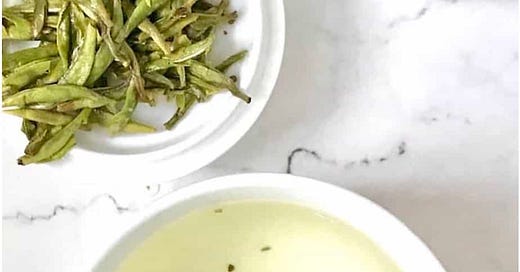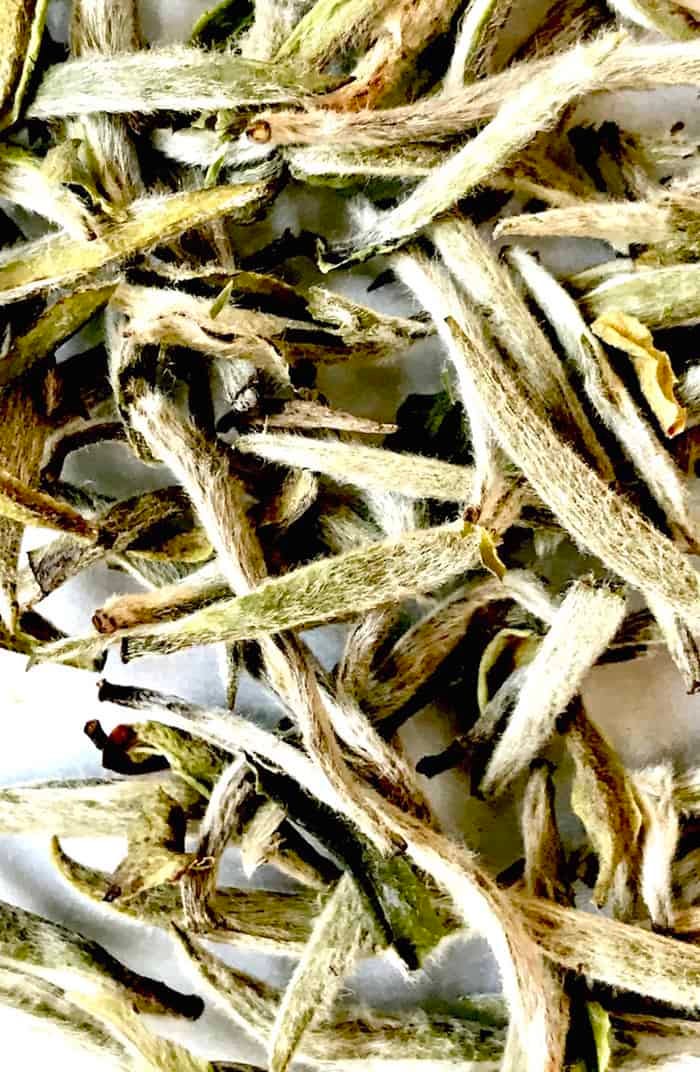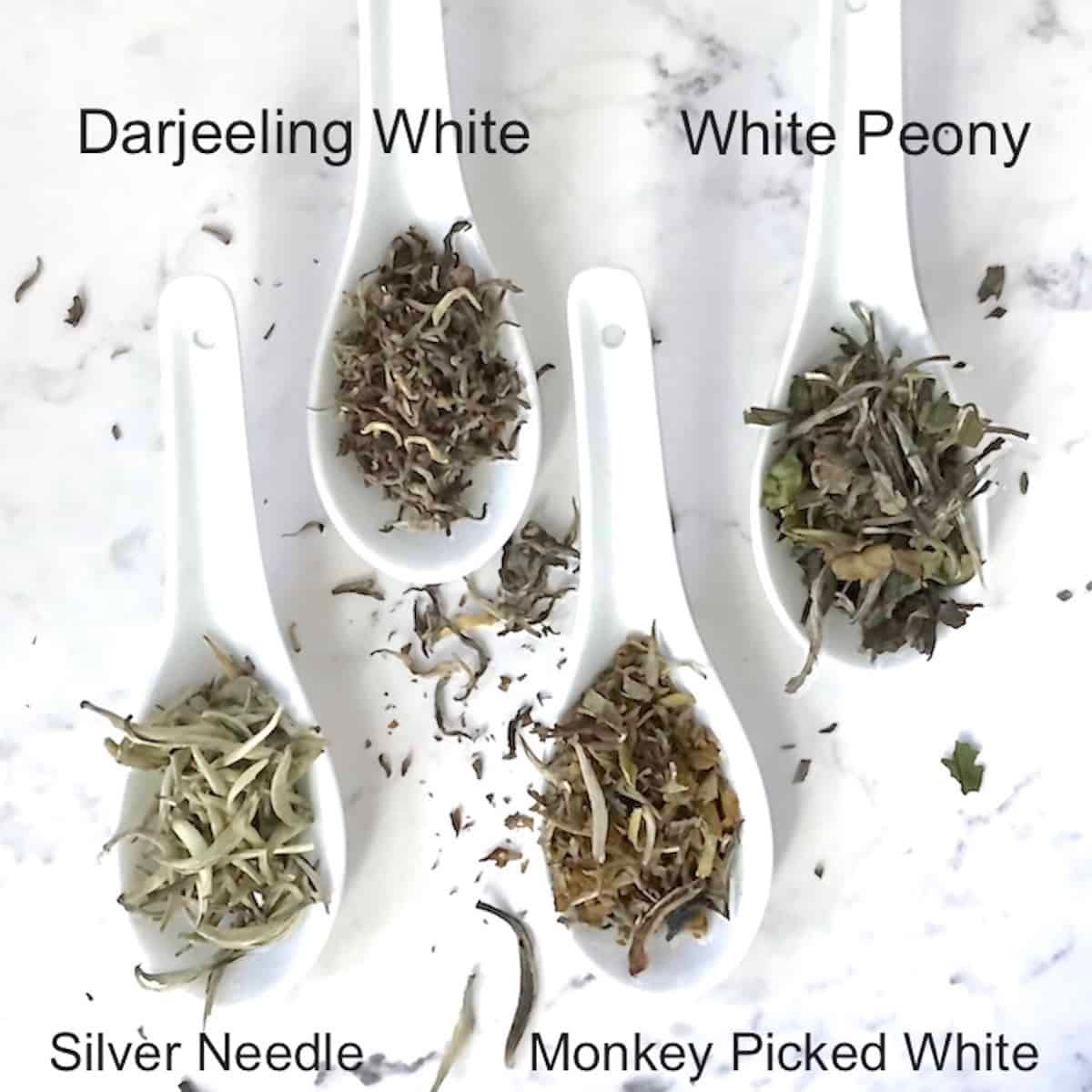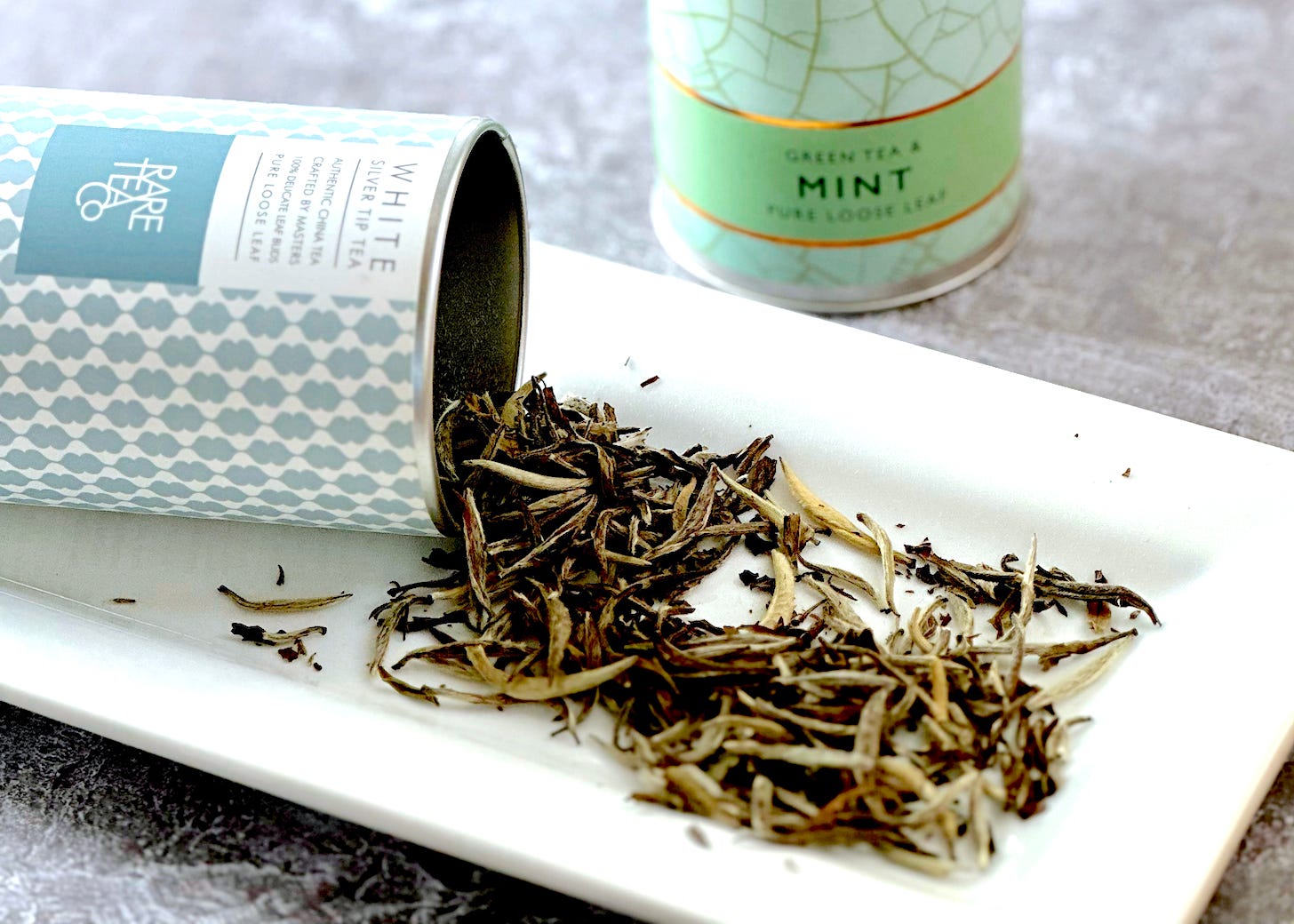Exceptional White Silver Needle Tea Has Remarkable Benefits
White tea is impossibly light but extremely powerful
Apologies for the duplicate email today. This article was initially sent as a paid post, but it was meant to be free and accessible to all subscribers.
Featherweight, with a wisp of flavor, white tea is prized for its smooth, delicate taste. Harvested from the youngest buds of early spring, the renowned Silver Needle tea embodies the purity and elegance of this minimally processed tea. As the least altered of all tea types, white tea preserves the Camellia sinensis plant's natural essence, offering various flavors and benefits that make it a true treasure among teas.
What makes this tea so different than others from the same plant?
What is White Tea?
White tea is the least processed type of tea. It is made from the Camellia sinensis plant but is not oxidized like black and oolong tea. In most cases, the young buds are selected for white teas alone.
During the quiet winter, the tea plant develops silently, drawing nourishment from the earth. Beneath the soil, it absorbs essential minerals, while above, it basks in sunlight, engaging in the slow process of rest and renewal. In the depths of the earth, the seeds of spring lie in silence, full of the promise of vibrant new life.
When spring unfurls, the first tender leaves and buds emerge, brimming with the highest concentration of nutrients, volatile oils, and chlorophyll. This fleeting moment of renewal yields the sweetest, most coveted tea—nature’s delicate gift after a season of quiet preparation.
Traditionally, loose white tea came from the Fujian Province of China. Today, it is produced in other Chinese provinces and tea-producing regions throughout India, Sri Lanka, South Asia, and Rwanda.
The Best White Tea
Only young tea buds, immature leaves, shoots, or tea plant tips are harvested. Traditionally, white tea, one of the true teas in China, could only be produced from the Camellia sinensis cultivar Da Bai.
While some styles of white tea are steamed and some are rolled before packing, most are not. This makes white tea the least processed tea. Once the tea is harvested, it undergoes a withering and drying phase to reduce moisture. This process takes about two to three days for white tea.
The tea chart below illustrates the minimum level of processing for each specific tea category.

Types of White Tea
Most white teas are produced in China with two primary varieties:
White Peony tea
Silver Needle tea
Looking closely at the Silver Needle pictured below, you can see it is produced from the plant's fresh new bud, which has characteristic fine white hairs.
Six of the best white teas are identified by style and place of origin:
Bai Hao Yin Zhen - Silver Needles or Flowery White Pekoe. Made from 100% buds. Fujian Province, China.
Bai Mu Dan (Pai Mu Tan) - White Peony. Made from buds and the first leaf together. Fujian Province, China.
Shou Mei (Long-Life Eyebrow) - Eyebrow teas are named for their delicately curved shapes. They are made from the leaves only. Fujian and Guangxi Province, China.
Gong Mei (Tribute Eyebrow) - Historically, tribute tea comes from giving the emperor the finest tea.
Monkey Picked White Tea - High-quality Chinese tea from the buds and young leaves of the plant.
Darjeeling White - Himalayan White is from the Darjeeling region of India.
Does White Tea Have Caffeine?
Although caffeine and polyphenols in tea can vary widely, white tea leaves contain caffeine. The amount of caffeine in any tea will vary depending on the processing methods, the amount of leaf used in brewing, and the length of time the leaf is infused in the water.
For tea drinkers who must watch their caffeine intake, black tea leaves reportedly have an average of about 40 milligrams of caffeine per cup, half the amount in a cup of coffee.
According to Maria Uspenski, author of Cancer Hates Tea, the Department of Nutritional Services provides the following ranges of caffeine content for a cup of tea made with loose leaves:1
Black Tea: 23 – 110 mgOolong Tea: 12 – 55 mgGreen Tea: 8 – 36 mgWhite Tea: 6 – 25 mg
In comparison, a cup of coffee contains about 90–175 mg (depending on the brewing method). For those who are sensitive to caffeine, we recommend using a little less leaf and brewing your teas with slightly cooler water for a shorter period of time. Green, white and lightly oxidized oolong teas are good choices, as they tend to benefit from lower water temperatures and shorter steeping times, which in turn extracts less caffeine.
What Does White Tea Taste Like?
I first discovered the beauty of Silver Needle white tea after reading Henrietta Lovell’s book Infused. Lovell's passionate storytelling and dedication to seeking out exceptional teas make this the perfect book for tea connoisseurs and those looking to expand their knowledge of the tea world. In it, she discusses her morning ritual, bed tea, with her favorite Silver Needle, a luxury anyone can enjoy. It's an excellent tea that I highly recommend. Lovell founded the Rare Tea Company, based in London.
READ:
The Peaceful Tranquillity of Tea Meditation
Morning tea feels peaceful when taken in bed. I begin each day with a soothing cup of Black Dragon Pearl, making this my favorite time of day.
The flavor is very mild. It's light with an almost honey-like sweetness. White tea has a clean, fresh taste, sometimes floral and often sweet — very smooth with no astringency.
If I were to compare this tea to wine, it would be delicately light and sweet, like Prosecco or Cava, but without the addition of sparkling fermentation.
Like wine, the tasting notes can vary widely depending on the leaf origins, terroir, style, processing, and brewing methods.
Brewing White Tea
Despite its name, the liquor of brewed white tea is a pale yellow. The name originates from the fine silvery hairs covering the unopened buds of the tea plant.
White tea can be brewed at different temperatures to highlight various flavor nuances. Many tea connoisseurs recommend steeping it at the same temperature as green tea to preserve its delicate flavor profile.
However, white teas do not turn bitter, so you can brew them at slightly higher temperatures, from 185 - 200°F (85-93°C), with 190°F (88°C) the ideal.
Leaf quantity: 2-3 gramsBrewing time: 4-6 minutesTemperature: 185 - 200°F (85-93°C)
As always, it's best to use filtered water.
White Tea Benefits
The health benefits of tea are well-documented. White tea, made from young buds, is particularly rich in antioxidants like catechins and polyphenols.
Clinical studies have shown physiological responses in individuals consuming approximately 3 to 10 cups of tea daily. These findings suggest that polyphenols obtained from this amount of brewed tea may contribute to various health benefits.
Current research indicates long-term tea and tea polyphenol consumption may support overall health. The most substantial evidence points to cardiovascular health benefits and potential antidiabetic and anti-obesity effects.2
Immune System Support
These potent compounds make white tea one of the healthiest varieties, offering essential support for the immune system. A well-functioning immune system is crucial for defending against disease, while imbalances can contribute to various health issues. Nutrition plays a key role in immune health; polyphenols are integral to this process.
As the most abundant plant compounds, polyphenols help protect against foreign pathogens—and tea is an excellent source of these immune-supporting nutrients.
Simply put, polyphenols help to regulate your immunity.3
Regulate Lipid Metabolism
A study at the Tianjin Medical University in China sought to address the rise of non-alcohol fatty liver disease (NAFLD) and find effective interventions that can delay or block its progression. This study demonstrated that white tea extract (WTE) could inhibit the progression of NAFLD in a high-fat diet (HFD)- induced mouse model.
Researchers have found that WTE alleviates obesity and excessive fat accumulation caused by high-fat diets. In addition, WTE regulates the expression of genes associated with lipid metabolism and energy expenditure while slowing the progression of NAFLD.4
The processing of white tea involves minimal technological processes, comprising only withering and drying. Therefore, most of the flavonol glycosides and flavone glycosides, or free amino acids including valine, leucine, tryptophan, and threonine are higher in white tea than green and black teas.
Drinking white tea daily could be a potential dietary intervention worth observing.
References
Uspenski, M., & Hardy, M. L. (2016). Cancer hates tea: A unique preventive and transformative lifestyle change to help crush cancer. Page Street Publishing.
Haufe, Thomas, Ho, Kacie, Ferruzzi, Mario, Neilson, Andrew. Potential Health Effects of Tea. Nutr Today. 2018;53(5):213-228. doi:10.1097/NT.0000000000000294.
Ding, S., Jiang, H., & Fang, J. (2018). Regulation of Immune Function by Polyphenols. Journal of Immunology Research, 2018, 1264074. https://doi.org/10.1155/2018/1264074
Li N, Zhou X, Wang J, et al. White tea alleviates non-alcoholic fatty liver disease by regulating energy expenditure and lipid metabolism. Gene. . 2022833doi:10.1016/j.gene.2022.146553









I love your Substack my daughter and l love tea. My daughter is the experimental one who buys so much different teas. I grew up in only black teas. I will always keep reading everything you post!!